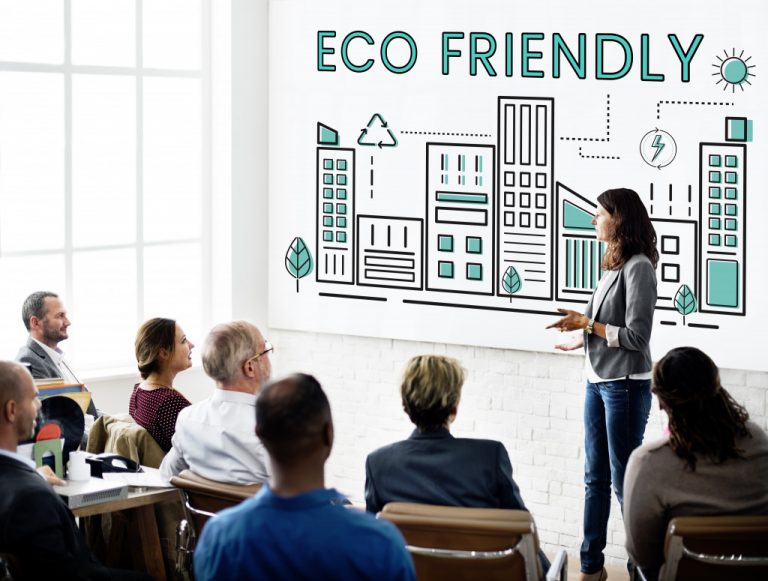We live in an age where people are learning about the importance of sustainability and fighting to incorporate more of it into our daily lives. The sports industry is one of the most popular sources of entertainment and recreation in the world. The fact it’s putting in more effort to be sustainable marks significant progress in the movement and is sure to influence other industries to do the same. With the help of technology, the sports industry is improving its practices more and more.
Human-powered gyms and eco-charging equipment
Two companies are changing the way gym sharks and athletes can power their homes and fitness centers. Energym and The Green Microgym both manufacture gym equipment such as stationary bikes that harvest workout energy and convert it into usable electricity. These equipment can also easily be installed in existing gyms, so even if a gym wasn’t initially built with sustainability in mind, it still has plenty of opportunities to move towards it. Running your energy stats through an online energy consumption calculator before and after the installation of eco gym equipment will show you a clear difference.
Apart from human energy-harvesting gym equipment, The Green Microgym also has a product called The Green Read and Ride Bike that is designed for young children in school. It is a stationary bike that looks like a regular, non-stationary one. It has a rack attached to the handlebar that serves as a book stand so that the students can read as they ride. This technology aims to bring more physical movement into the routines of elementary school students. The formation of healthy habits is important at a young age to help reduce risks of obesity and heart-related conditions.
At the same time, The Green and Ride Bike serves as a way of “eco-charging” schools. It plugs into a wall outlet and gives about 10-30 watts back to the building when pedaled consistently. It is also a way to generate more interest in STEM among young children. Educators that use The Green and Ride Bike in their classrooms report positive results, saying that their students feel more motivated and accomplished.
Eco-friendly sporting apparel and equipment
 In today’s business landscape, companies are learning the importance of incorporating sustainability into their business models. Millennials and Gen Z make up a considerable percentage of the market, with the former being the largest group in today’s workforce. Both age groups are the driving force of conscious consumerism. They eat less meat, care about diversity and inclusivity, and go so far as to boycott brands with unethical and unsustainable practices. 73 percent of millennials are willing to shell out extra cash for sustainable products and services.
In today’s business landscape, companies are learning the importance of incorporating sustainability into their business models. Millennials and Gen Z make up a considerable percentage of the market, with the former being the largest group in today’s workforce. Both age groups are the driving force of conscious consumerism. They eat less meat, care about diversity and inclusivity, and go so far as to boycott brands with unethical and unsustainable practices. 73 percent of millennials are willing to shell out extra cash for sustainable products and services.
Sports apparel manufacturers are aiming to make their products more sustainable by cutting their use of perfluorinated and polyfluorinated chemicals (PFCs). These substances are used to make textiles waterproof – a necessary characteristic of sports clothing. Mountain sports equipment supplier Vaude has successfully eliminated PFC from its products.
The North Face is offering lifetime warranties on their products to keep them from piling up in landfills, eliminating one of the characteristics of fast fashion that made millennials and Gen Z turn away from it.
Apart from apparel, equipment must also be sustainable. Surfboards, for instance, need to be made more durable so that they’ll last much longer than just a few surfs before being thrown into a landfill. Brands such as Spooked Kooks and NOTOX manufacture eco-friendly surfboards. Apart from durability, these brands see to it that their products are sourced locally to reduce carbon footprint and that they are made from recycled materials.
Sustainable sporting venues
Sustainability in sports shouldn’t be limited to sports professionals such as athletes and trainers, but should also extend to fans and spectators. This means limiting the carbon footprints of sporting venues.
The Mercedes-Benz Stadium, home of the Atlanta Falcons of the NFL, is one of the most sustainable arenas in the world. It uses only LED lighting and has 4,000 solar panels lining its rooftop. The stadium uses a stormwater management solution with a 2 million gallon capacity, leading to 47 percent less water consumption than other sporting venues. The venue also has recycling and composting bins throughout the facility. It is the first professional sports arena in the United States to have received a platinum Leadership in Energy and Environmental Design (LEED) certificate.
Other sustainable stadiums in the United States include Levi’s Stadium in Santa Clara and the Golden 1 Center in Sacramento.
Given the sports industry’s influence and popularity, it’s no small feat that it has begun to embrace sustainability in its practices in recent years. Leaders in the industry use science and technology to determine more eco-friendly alternatives for apparel, equipment, and sporting venues. Hopefully, their initiative moves other industries to adopt more sustainable practices.












